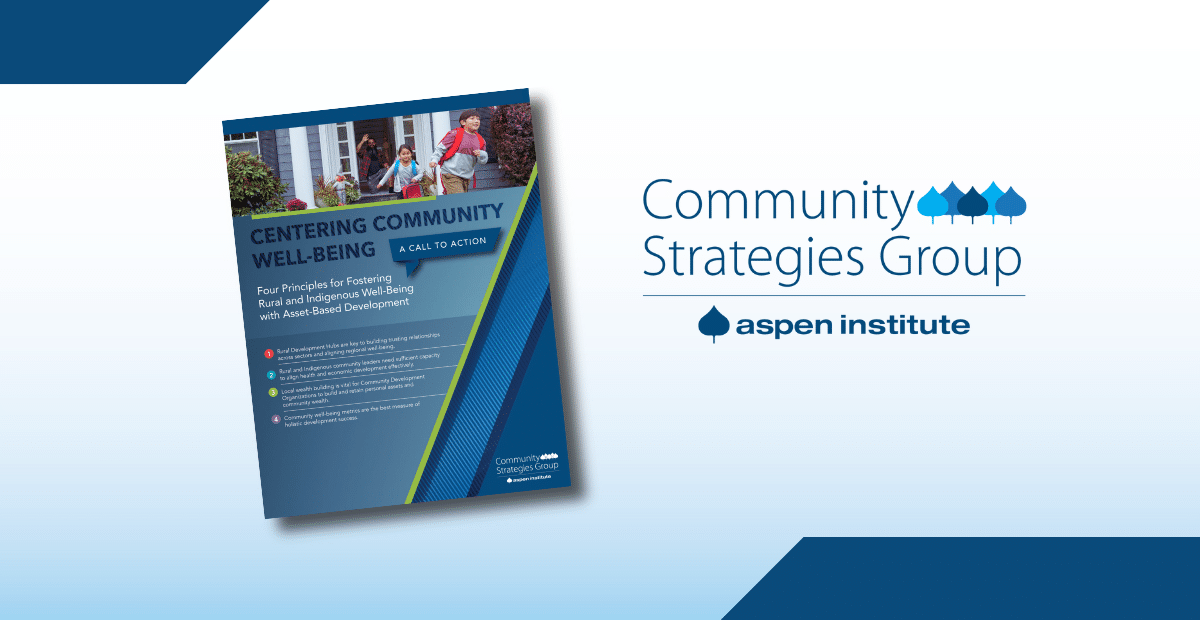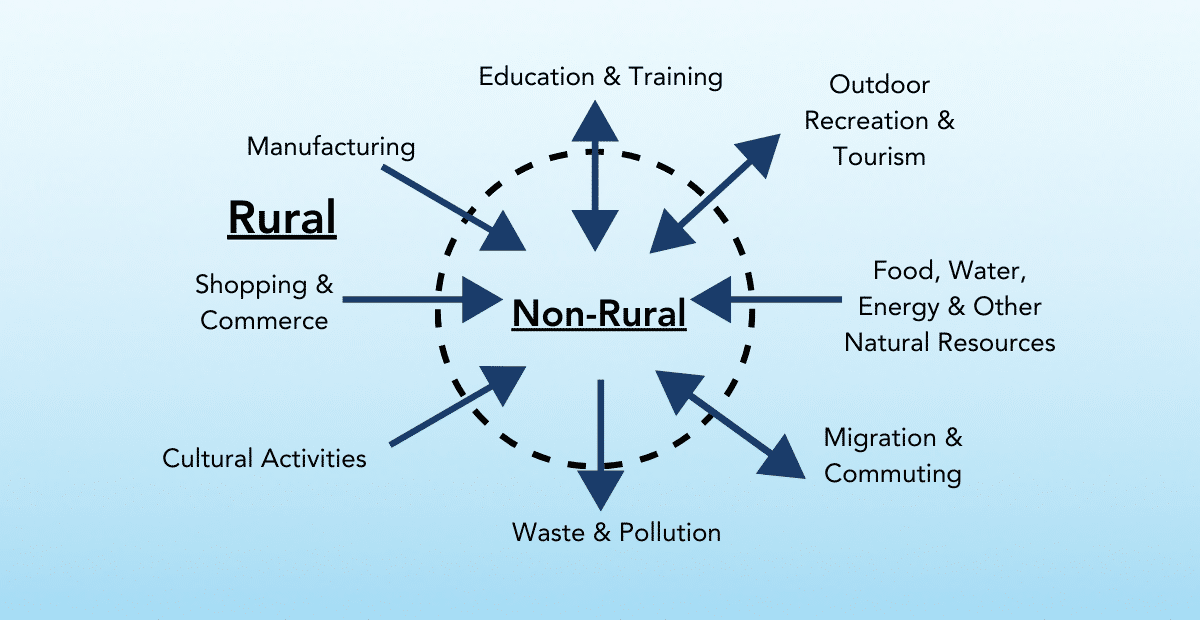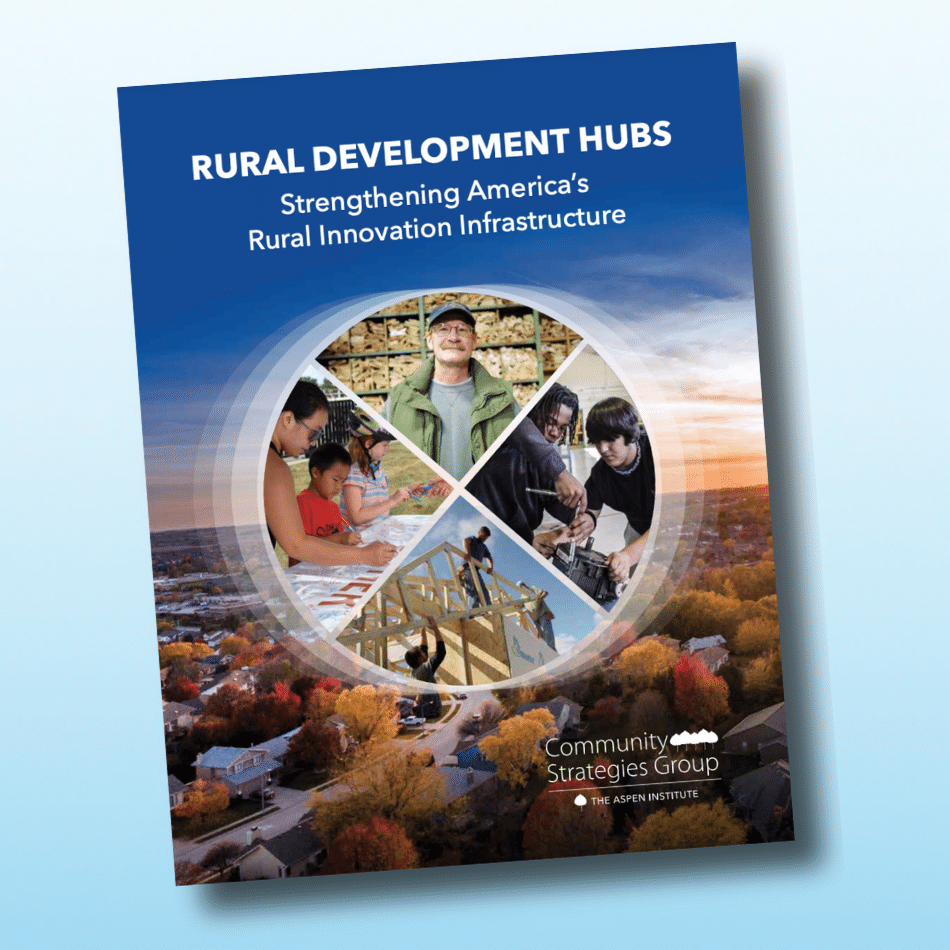Outdoor recreation is driving new opportunities for local communities in many rural places. Analysis of recent news articles and solutions shared with Aspen CSG by rural practitioners provide perspective on how to do economic development differently with rural recreation economies.
Reporting by Sarah Melotte at The Daily Yonder digs deep into some of the big questions around recreation economies, particularly how recreation economies influence areas of persistent poverty. Between 1979 and 2013, only 1% of recreation-dependent counties remained in persistent poverty. Of the counties that came out of persistent poverty, 24% were dependent on recreation.” On the surface, this is a simple story of great success, where recreation economies helped create a more prosperous rural community.
But the reality is more complex. In some rural communities, a vibrant recreation economy has reduced opportunities for the lowest-income residents, driving them to relocate out of the area to find affordable housing.
In a follow-up to The Daily Yonder article referenced above, Melotte explores disparities in Pitkin County, Colorado, home to Aspen ski resorts (and the Aspen Institute’s original headquarters). The story of Pitkin County is one extreme example of an outdoor recreation economy, but it does have cautionary lessons for any region looking to grow in similar ways.
Melotte writes, “although recreation can attract permanent residents and produce a diverse economy, it can center on seasonal, low-wage and low-skilled jobs while simultaneously increasing housing prices.” Recreation economies do not promote prosperity if workers and families end up with poverty wages and/or are forced to relocate outside of their community.
Additionally, even when nearby natural amenities provide the potential for local recreation economies, it doesn’t always mean prosperity is around the corner. A recent article from NPR explores how the Redwoods National Park in California is a marvelous natural attraction but has not brought prosperity to nearby rural communities. What was missing? What’s the secret sauce?
Consider how Pennsylvania Wilds in North-Central Pennsylvania works to grow a regional outdoor recreation economy. Their website shows regional opportunities and destinations that demonstrate a collaborative and united perspective for potential visitors, as well as new and existing businesses. Founder and CEO Ta Enos highlights the importance of “our differences aside and come together in a real way to grow this new industry, for the good of all our communities.” This language and framing move away from the deficit framework that causes rural communities to see each other as competitors and vie for attractions and visitors. By building an inclusive regional planning effort, the communities in the PA Wilds effort work together to draw visitors to the region and collectively promote all attractions in the region. This maximizes their investments and marketing efforts and keeps them in control in planning for local businesses to benefit vs outside-owned firms.
For the Good of All
In conversation with rural practitioners, we’ve found that one thing that is necessary for recreation to drive healthy, community-focused economic prosperity: the benefits of a tourism economy must support all community residents through living wage jobs and related opportunities for local ownership without damaging the landscape.
Rural tourism leverages local and regional assets to attract visitors who spend money at local businesses. But revitalizing a community through tourism can create a fragile basis for prosperity since jobs created by a tourism economy are usually low-wage, without benefits, and seasonal. The risk is that tourism dollars don’t stay within the community, and workers can’t afford to patronize the businesses where they work.
Overuse has also been an issue in recent years. Some communities have actively tried to discourage tourists after they were overwhelmed and saw real degradation of their natural assets during the second year of the pandemic as millions traveled to rural areas for vacations or remote work opportunities. Rural areas need added capacity and technical support to help manage and protect their outdoor areas for their own use as well as for visitors and future generations.
Practitioner Solutions and Ideas for Balanced Rural Outdoor Recreation Economies
Solutions for rural communities include growing prosperity from the ground up by fostering entrepreneurship and cooperative or employee-owned business opportunities. Communities should focus on recruiting new businesses that respect the local environment, value the land, and recognize the history and traditions of the region.
Consider these tactics and big ideas for recreation economies, shared by participants in our virtual discussion on land stewardship and by rural practitioners in recent conversations:
- Balanced tourism economies require deep collaboration among community partners. For example, a tourism-based economy in Eastern Tennessee is growing through partnerships between regional economic development councils and poverty-fighting community action agencies. This collaboration focuses on economic development and broad prosperity that aims to help those living on the economic margins.
- Communities should consider strengthening their capacity to become a destination by identifying local assets, developing sustainability plans, and coordinating regionally with local artists, restaurants, lodging, outdoor recreation businesses, and other attractions.
- Funders should reward (and fund) regional collaboration efforts and allow longer timeframes for funding to support efforts to help build outdoor recreation economy capacity.
- Capacity building funding and regional technical assistance can help groups of smaller Native nations compete for funding. Native nations should have their own government funding set asides for outdoor recreation.
- Worker training programs can educate lower-wage hospitality workers about different economic opportunities available in their community, including options for entrepreneurship.
- Communities should prioritize local entrepreneurship training along with small business lending efforts to build a network of locally owned businesses for all aspects of the recreation economy. These can include lodging, outfitters, guides, restaurants, retail, and others.
- Local and regional development agencies (including CDFIs) should direct their grants, loans, and tax credits to businesses and development efforts that embrace community tradition and value the land.
- Many rural tourism economies rely on short-term rental options like Airbnb or VRBO to house visitors. However, these risk displacing residents as owners transform leased properties into short-term vacation rentals. The owners of vacation rentals often do not live within the community, so requiring short-term rentals to be owner-occupied, as in Hood River, Oregon, helps ensure that the dollars spent on vacation housing sticks and circulates within the rural community.
- Communities must plan for and manage their land and development toward the long-term needs of the place and region. This requires a focus on land use and prioritization of publicly-owned land towards permanently-affordable housing as well as mixed-use and transit-oriented development with private land development.
- Regions need affordable housing for workers and small business incubators to develop local businesses to expand tourism and outdoor recreation. Examples include outfitters and tour guides. This is especially an issue for Native nations that want to expand to outdoor recreation beyond hunting and fishing. There is a need for Native-run development business incubators so their members can learn how to develop and run this type of business.
- Land trusts, a form of shared land ownership, can protect access to land for local residents and visitors, stabilize local housing markets by keeping rental costs low, and potentially protect against rampant development.
- Areas with road & mountain biking and hiking trail systems need to be inclusive and competitive by having digital trail maps, and more generally, rural areas need better digital information about how tourists can safely access natural areas, the rules and regulations for those areas, and information on how those areas are managed.
- The Economic Development Agency should issue a NOFA for just Travel, Tourism and Outdoor Recreation with a rural set aside targeted to the highest areas of outdoor recreation locations. There was a separate NOFA for Travel, Tourism and Recreation with ARPA funds in 2021, but the focus was on urban areas hit by tourism declines.
- The government should offer only grants (not loans), and match requirements should be waived for nonprofits. It’s sometimes risky for nonprofits or rural local governments to get involved in outdoor recreation infrastructure; liens on buildings need to be reduced more quickly or waived to facilitate infrastructure projects.







